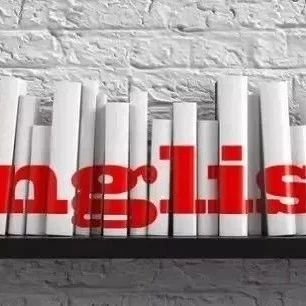转254:【仁爱版初中英语】2023中考英语精髓知识点汇总!

【仁爱版初中英语】2023中考英语精华知识点汇总!
香水百合的暖心文字 2023-01-16 00:00
how soon指再过多久,主要用来对表示将来的一段时间(in an hour, in two weeks 等)提问?如:how soon can you come? 你多快能赶来? 3. few, a few, little, a little, several, some few 和little的意思是否定的,表示“很少”或“几乎没有”;而a few和a little的意思是肯定的,表示“有一些,有一点儿” few 和 a few修饰可数名词;little 和 a little 修饰不可数名词 several用于修饰可数名词,语意比a few和some更肯定,含有“好几个”的意思 some可修饰可数名词,也可修饰不可数名词,从数量上说,它有时相当于a few 或 a little,有时指更多一些的数量 4. the other, another the other 指两个人或事物中的“另一个”,表示特指?如:we stood on one side of the road and they stood on the other. 咱们站在街这边,他们站在那边 another着重于不定数目中的“另外一个”,表示泛指,所以常用来指至少三个中的一个?如:she has taken another of my books. 她已经拿了我的另外一本书 5. spend, take, cost, pay spend的宾语通常是时间?金钱?在主动语态中,句子的主语必须是人,而且后面不能用动词不定式做它的宾语?如:she spent the whole evening in reading. 她把整个晚上用来读书 take常常用来指“花费”时间,句子的主语通常是表示事物的词语?如:how long will this job take you?你做这项工作要花多长时间? cost 指花费时间?金钱或力气等,只能用表示事物的词做主语,并且不能用于被动语态?如:how much does the jacket cost?这件夹克多少钱? pay 主要指主语(某人)买某物(或为某事)付多少钱(给某人)?如:i pay for my rooms by month. 我按月支付租金
6. among, between between 的意思是“在……中间,在……之间”,一般指在两者之间?如:there is a table between two windows. 在两扇窗户之间有一张桌子。between 偶尔也表示在多于两个以上的事物之间,但那是指在每二者之间。如:the relationship between different provinces and municiplities 省市和省市之间的关系(这里是指每两个省市之间的相互关系?)
reach是及物动词(较 get更正式),其后可直接跟地点名词做宾语(不克不及用介词)。如:he reached beijing yesterday. 他昨天到达北京。
[考点快忆] must “必须”;have to“不得不”;need “必须;需要”;can(could)“能;可能”;may (might) “可以;可能”;shall,will (would)“将;会;愿意;要”;should“应当”。
肯定句的形式为:There be + 名词(单数或复数)+地点状语或时间状语。
be动词单复数的确定,看be后边第一个名词,当所接主语为单数或不可数名词时,be动词形式为is;当所接主语为复数名词时,be动词为are;当be动词后接两个以上主语时,be动词与最临近主语保持数上的一致。意思为“某地有某人或某物”。如:
There is an eraser and two pens on the desk. 桌子上有一块橡皮和两支钢笔。
There are two pens and an eraser on the desk. 桌上有两支钢笔和一块橡皮。
(1)there be的否定句,即在be的后面加上not。
否定形式为:There be + not + (any) + 名词+地点状语。
There is not any cat in the room. 房间里没猫。
There aren’t any books on the desk. 桌子上没书。
(2)there be句型的疑问句就是将be提到句首:Be there + (any) +名词+地点状语
肯定回答:Yes, there is / are. 否定回答:No, there isn’t / aren’t.
-Is there a dog in the picture?画上有一只狗吗
-Yes, there is. 有。
-Are there any boats in the river?河里有船吗
-No, there aren’t. 没有。
(3)特殊疑问句:How many . . . are there (+地点状语)
某地有多少人或物回答用There be . . .
There’s one. / There are two / three / some . . .
有时直接就用数字来回答。One. / Two . . .
-How many students are there in the classroom?教室里有多少学生
-There’s only one. / There are nine. 只有一个。/有九个。
(4)如果名词是不可数名词,用:How much + 不可数名词 + is there + 地点状语
How much water is there in the cup?杯中有多少水
This is the present that he gave me for my birthday
2.关系代词和关系副词的功用
1. 作主语:关系代词在定语从句中作主语时,从句的谓语动词的人称和数须和先行词一致。例如:
The cars which are produced in Hubei Province sell very well.
2. 作宾语:She is the person that I met at the school gate yesterday.
The book that my grandmother gave me is called “The Great Escape”.
3. 作定语
The girl whose father is a teacher studies very hard.
4. 作状语
1. who 指人,在定语从句中作主语。例如:
The person who broke the window must pay for it.
The boy who is wearing the black jacket is very clever.
2. whom指人,在定语从句中作宾语。例如:
Do you know the young man (whom) we met at the gate?
Mr Lee (whom) you want to see has come.
3. whose 指人,在定语从句中作定语。例如:
I know the boy whose father is a professor.
4. which指物,在定语从中作主语或宾语。例如:
A dictionary is a book which gives the meaning of words.
Here is the book (which) the teacher mentioned yesterday.
5. that多指物,有时也指人,在定语从句中作主语或宾语。例如:
I’ve read the newspaper that(which) carries the important news.
Who is the person that is reading the newspaper over there?
6. when 指时间,在定语从句中作状语。例如:
He arrived in Beijing on the day when I left.
7. where 指地点,在定语从句中作状语。例如:
This is the house where we lived last year.
The factory where his father works is in the east of the city.
四. 关系代词 whom, which 在定语从句中作介词宾语时,可以和介词一起放于先行词与定语从句之间,有时为了关系紧凑也可以将 whom 与 which 与先行词紧挨着书写,而将介词置于定语从句的后面,如:
That was the room in which we had lived for ten years. = That was the room
which we had lived in for ten years.
五. 具体使用时还要注意下列问题:
1. 只能使用that,不用which 的情况:
(1) 先行词是all, few, little, nothing, everything, anything 等不定代词时。例如:
All that he said is true.
(2) 先行词被only, no, any, all,等词修饰时。例如:
He is the only foreigner that has been to that place.
(3) 先行词是序数词或被序数词修饰的词。例如:
He was the second (person) that told me the secret.
(4) 先行词是形容词最高级或被形容词最高级修饰的词。
This is the best book (that) I have read this year.
(5) 先行词既包括人又包括物时。例如:
He talked about the people and the things he remembered.
2. 只能用which,不用that 的情况:
(1) 在非限制性定语从中。例如:
The meeting was put off, which was exactly what we wanted.
(2) 定语从句由介词+关系代词引导,先行词是物时。例如:
The thing about which he is talking is of great importance.
本文链接: https://www.yizhekk.com/0158282826.html








